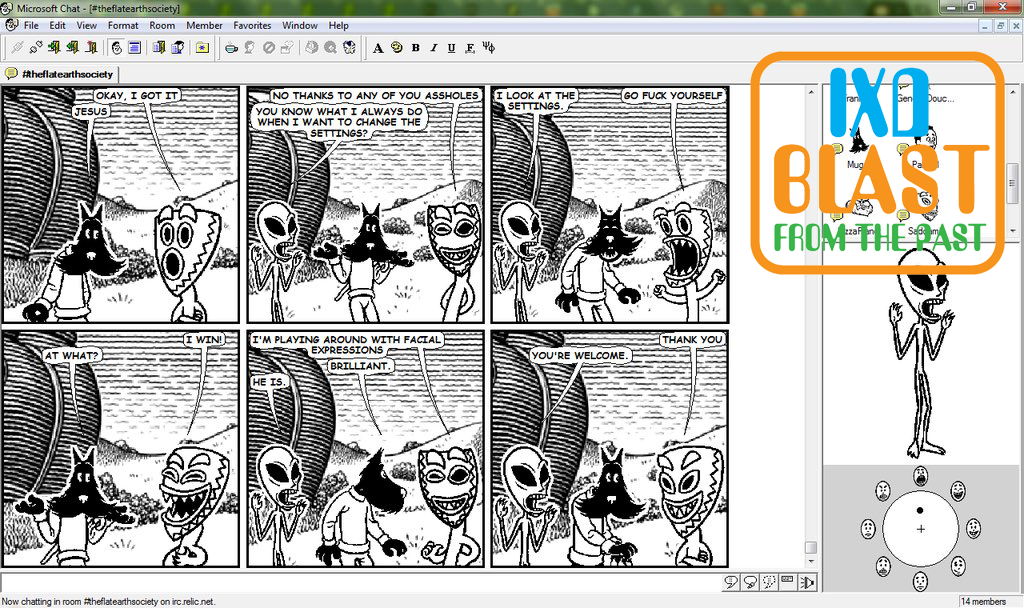This text chat interface was so revolutionary and insightful it’s a shame it wasn’t copied and emulated relentlessly. Even today, there’s nothing like it and it’s fusing of text and image is still unique, relevant, and would be successful—especially in the social media era of Twitter, Instagram, etc.
Microsoft’s Comic Chat was an automatic conversation visualizer that used the format of comic books to lay-out text for a chat into a visual story. Taking lessons from Scott McCloud’s seminal book, Understanding Comics, Comic Chat’s designers and engineers, David Kurlander, Tim Skelly, and David H. Salesin, created a deceptively simple system that automatically generated comic-style visual panes in a text-based chat system. As users typed (or, today, perhaps talk), the system would identify sources (as multiple, distinct people might be in the chat), break the text into manageable chunks, create text “bubbles” for the text (by user), and vary the scene perspective to add variety or highlight a particular character’s text. The results are beautiful, engaging (in a rare example of this term being true), and enliven the conversation.
The result was immediately understandable for users and achieved its aim nearly seamlessly. And, it works without behind-the-scenes intervention. It would work today and, given the rise in graphic novel popularity in the last twenty years, would be a welcome addition to current social media and other interactive conversation systems. The results could even be published, on demand, into printed books.
Experience Design 1.2: pages 218-219





Recent Comments